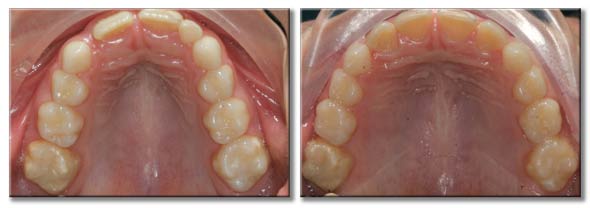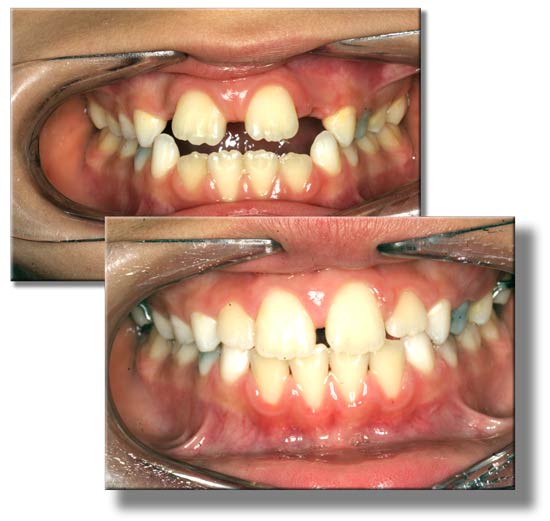Tongue thrusting can adversely affect the teeth and mouth. A person swallows from 1,200 to 2,000 times every 24 hours with about four pounds (1.8 kg) of pressure each time. If a person suffers from tongue thrusting, this continuous pressure tends to force the teeth out of alignment. Many people who tongue thrust have open bites; the force of the tongue against the teeth is an important factor in contributing to “bad bite” (malocclusion). Many orthodontists have completed dental treatment with what appeared to be good results, only to discover that the case relapsed because of the patient’s tongue thrust. If the tongue is allowed to continue its pushing action against the teeth, it will continue to push the teeth forward and reverse the orthodontic work.
Speech is frequently affected by the tongue thrust swallowing pattern. The “S” sound (lisping) is the one most affected. The lateral lisp (air forced on the side of the tongue rather than forward) shows dramatic improvement when the tongue thrust is corrected. However, lisping and tongue thrust are not always associated.
Arch development to create more space for the tongue:

Appliance to widen the arch

Arch widened to create more space for the tongue

Correction of tongue trust through arch development
